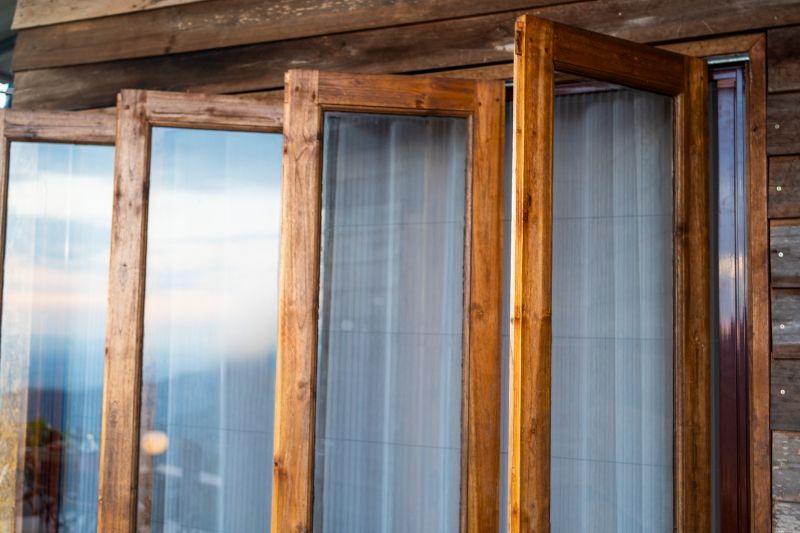Essential Products For Successful Casement Window Installations
Equip yourself with the most recommended tools and accessories to ensure a smooth and durable casement window setup.
 Installing casement windows often requires a variety of specialized products to ensure proper function, durability, and ease of installation. From weatherproofing components to hardware and sealing solutions, the right selection of products can significantly influence the performance and longevity of the window setup. It is essential to choose products that are compatible with the specific window design and installation environment to achieve optimal results.
Installing casement windows often requires a variety of specialized products to ensure proper function, durability, and ease of installation. From weatherproofing components to hardware and sealing solutions, the right selection of products can significantly influence the performance and longevity of the window setup. It is essential to choose products that are compatible with the specific window design and installation environment to achieve optimal results.
Top Overall Option
Universal Casement Window Hardware Kit
This comprehensive hardware kit includes hinges, locks, and handles designed for versatility across various casement window styles. Made from durable materials, it offers reliable operation and straightforward installation, making it a practical choice for both DIY enthusiasts and professionals.
Types of Products For Casement Windows Installations
Hinges and Pivot Points
Essential for opening and closing functionality, hinges come in various styles to accommodate different window weights and opening angles.
Locks and Latches
Security and safety are enhanced with locking mechanisms designed specifically for casement windows, providing secure closure and ease of use.
Weatherstripping and Seals
Weatherproofing components help prevent drafts and water infiltration, improving energy efficiency and comfort.
Sealing Tapes and Flashing
These products provide a barrier against moisture and air leaks around the window frame, ensuring a tight seal.
Shims and Spacers
Used to achieve proper alignment and fit during installation, ensuring smooth operation and a secure fit.
Fasteners and Mounting Brackets
Secure the window frame to the building structure, providing stability and support.
Drainage and Weep Holes
Allow water to escape from the window frame, preventing accumulation and potential damage.
Insulating Foam and Sealants
Fill gaps and improve insulation around the window frame for better energy efficiency.
Pivot Bar and Crank Hardware
Facilitate smooth operation of the window's opening mechanism, especially in crank-operated models.
Replacement Parts and Repair Kits
Provide solutions for maintenance and repair of existing casement window components.
Popular Choices
Widely used for their compatibility across multiple window types, these hinges are favored for their ease of installation and durability.
Offering enhanced security, these locking systems are popular for their reliability and ease of use.
Available in various materials, these kits are commonly chosen for their effectiveness in sealing gaps.
These tapes are frequently used for sealing around window frames due to their strong adhesion and flexibility.
Popular for their versatility in achieving perfect alignment during installation.
Chosen for their strength and reliability in securing window frames to various building materials.
Commonly installed to facilitate water runoff and prevent damage from moisture buildup.
Popular for quick and effective filling of gaps around the window frame.
Widely used for their ease of operation in crank-driven casement windows.
Favored for maintaining the functionality of older or damaged windows without complete replacement.
Casement window installations typically involve multiple components such as hinges, locks, weatherstripping, and sealing tapes. Each element plays a crucial role in maintaining energy efficiency, preventing drafts, and ensuring smooth operation. The quality of these products can vary widely, making it important to consider durability, ease of installation, and compatibility with existing window frames.
Proper installation accessories like shims, mounting brackets, and fasteners are also vital. These help in securing the window firmly within the opening and ensuring proper alignment. Additionally, weatherproofing products such as sealants and flashing tapes help protect against water infiltration and air leaks, which are common concerns with casement windows. Selecting the right combination of these products can contribute to a secure, functional, and long-lasting window installation.
Overall, the market offers a broad array of products tailored for casement window installations, from basic hardware to advanced sealing solutions. Understanding the different types of products available and their specific functions can assist homeowners and contractors in making informed decisions. Whether you are undertaking a new installation or upgrading existing windows, choosing quality components suited to your specific needs is key to achieving a successful and efficient outcome.
Key Buying Considerations
- Compatibility with existing window styles and sizes to ensure proper fit and operation.
- Material durability, especially in high-use or challenging environments.
- Ease of installation, particularly if undertaking a DIY project.
- Weatherproofing effectiveness to prevent drafts and water leaks.
- Security features such as locking mechanisms and reinforced hardware.
- Corrosion resistance for hardware components exposed to moisture.
- Adjustability features to facilitate proper alignment during installation.
- Compatibility with various window opening mechanisms, including crank or push-out styles.
- Availability of replacement parts for future maintenance or repairs.
- Cost-effectiveness balanced with quality and durability.
- Brand reputation and customer reviews for reliability insights.
- Warranty or guarantee offered by the manufacturer for peace of mind.
- Ease of cleaning and maintenance of hardware components.
- Environmental conditions of the installation site, such as exposure to saltwater or extreme temperatures.
- Compliance with local building codes and safety standards.
